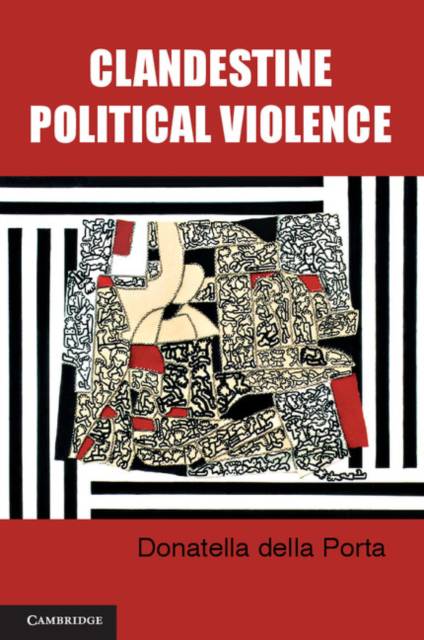
Door een staking bij bpost kan je online bestelling op dit moment iets langer onderweg zijn dan voorzien. Dringend iets nodig? Onze winkels ontvangen jou met open armen!
- Afhalen na 1 uur in een winkel met voorraad
- Gratis thuislevering in België vanaf € 30
- Ruim aanbod met 7 miljoen producten
Door een staking bij bpost kan je online bestelling op dit moment iets langer onderweg zijn dan voorzien. Dringend iets nodig? Onze winkels ontvangen jou met open armen!
- Afhalen na 1 uur in een winkel met voorraad
- Gratis thuislevering in België vanaf € 30
- Ruim aanbod met 7 miljoen producten
Zoeken
Omschrijving
Clandestine Political Violence compares four types of clandestine political violence: left-wing (in Italy and Germany), right-wing (in Italy), ethnonationalist (in Spain), and religious fundamentalist (in Islamist clandestine organizations). Oriented toward theory building, Donatella della Porta develops her own definition of clandestine political violence. Building on the most recent developments in social movement studies, della Porta proposes an original interpretative model. Using a unique research design, she singles out some common causal mechanisms at the onset, during the persistence, and at the demise of clandestine political violence. The development of the phenomenon is located within the interactions among social movements, countermovements, and the state. She pays particular attention to the ways in which the different actors cognitively construct the reality they act upon. The internal dynamics of the clandestine political organizations are devoted special attention. Based on original empirical research as well as existing research in many languages, this book is rich in empirical evidence on some of the most crucial cases of clandestine political violence.
Specificaties
Betrokkenen
- Auteur(s):
- Uitgeverij:
Inhoud
- Aantal bladzijden:
- 338
- Taal:
- Engels
- Reeks:
Eigenschappen
- Productcode (EAN):
- 9780521195744
- Verschijningsdatum:
- 22/07/2013
- Uitvoering:
- Hardcover
- Formaat:
- Genaaid
- Afmetingen:
- 155 mm x 231 mm
- Gewicht:
- 612 g

Alleen bij Standaard Boekhandel
+ 403 punten op je klantenkaart van Standaard Boekhandel
Beoordelingen
We publiceren alleen reviews die voldoen aan de voorwaarden voor reviews. Bekijk onze voorwaarden voor reviews.











